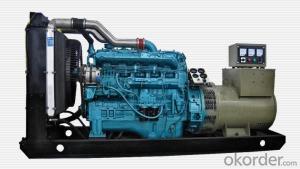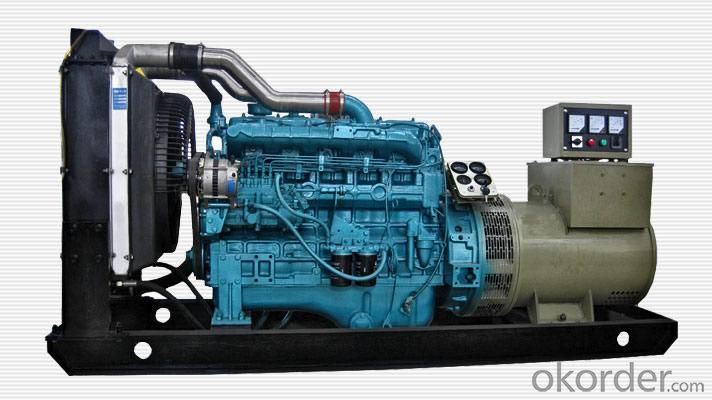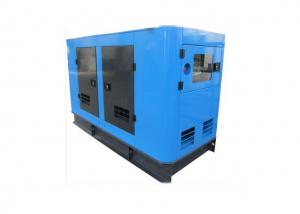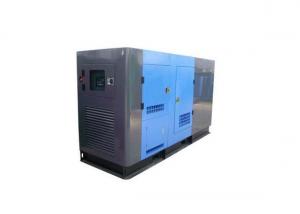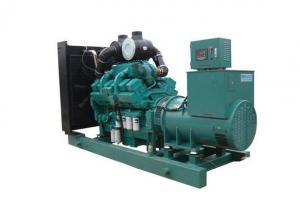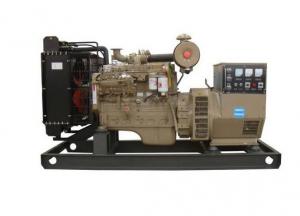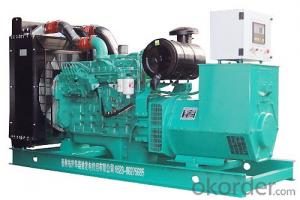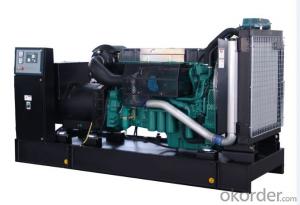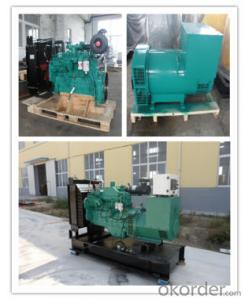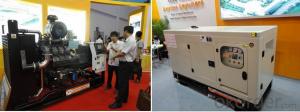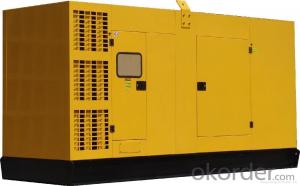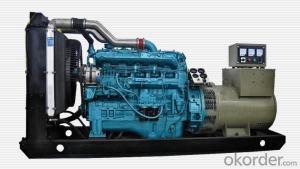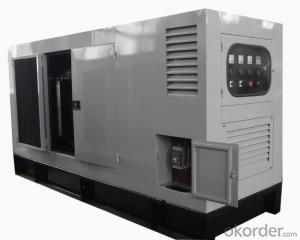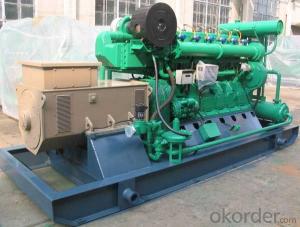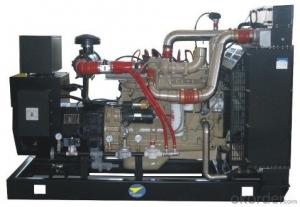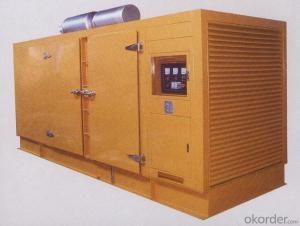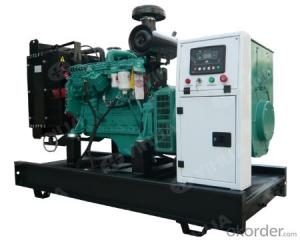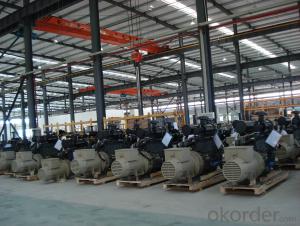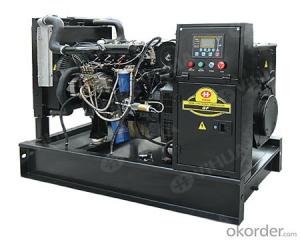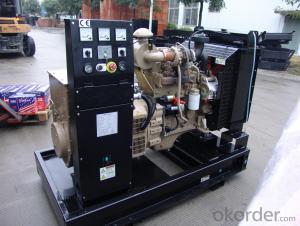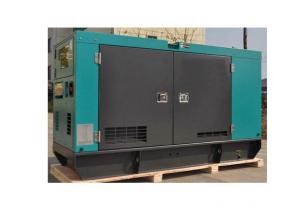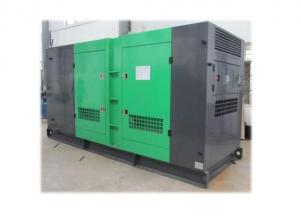Factory price china yuchai diesel generator sets 660 kw
- Loading Port:
- Shanghai
- Payment Terms:
- TT OR LC
- Min Order Qty:
- 1 unit
- Supply Capability:
- 300 unit/month
OKorder Service Pledge
OKorder Financial Service
You Might Also Like
Specifications
open type dioesel generator with yuchai enginee
1) Factory direct sale
(2) CE, ISO9001 quality
Power range | 18-650KW |
Engine | All series powered by Yuchai engine |
Alternator | All series owning alternator options of Stamford/Marathon/ENGGA |
Controller system | Hanging control box, automatic control module Smartgen HGM6310 |
Base frame | International channel steel welded base, inbuilt composite damping system; sandblast, acid-washing, antiseptic treatment |
Radiator | Standard genset-joining radiator of 40 °C ambient temperature |
Diesel generator Powered by Yuchai Engine,which yuchai is a large state-owned enterprise and a Nasdaq listed company in USA (NYSE:CYD). Its main business covers diesel engine, contruction machinery, vehicle parts. The engines produced by Yuchai include series YC6G, YC4G, YC4E to which American technology applied, series YC6A, YC6B, YC6J, YC4B, YC4D, YC4F, YC4W to which German technology applied, and YC6M series in which world top technology integrated, totally 12 series.
| YUCHAI Series | Power(KW) | Power(KVA) | Jichai Engine Model | Cylinder NO. | Fuel consumption g/kw.h | DimensionL*W*H | Weight KG |
| FKS-Y660 | 660 | 200 | YC6G245L-D20 | 6 | ≤195 | 2500*970*1500 | 2300 |
- Q: Winter diesel generator should pay attention to what?
- general temperature below 5 degrees Celsius, the engine should be added before the start of hot water or steam preheating, to be preheated to more than 30~40 DEG C and then start
- Q: Ex:cars.But im not sure about buses, motorcycles, and airplanes.Please help me out.thanks
- Subways, street cars, trains, elevators, escalators, moving sidewalks, scooters, Electric buses. Most locomotives run on electric motors but they have a massive diesel generator built in.
- Q: If electric vehicles included a generator they could charge the battery while moving. It seems the best choice to me.
- A generator is not 100% efficient, so it takes more energy then it produces. In a gas-powered car, where the engine runs all the time when it's moving, there is extra energy available to power the generator that would just be wasted.
- Q: i got 390 TONS OF REFRIGERATION OF PU,TOTAL 16 NO,HOW MUCH KW OR KVA REQUIRED DISEL GENERATOR TO RUN THIS ,PACKAGED UNIT, TOTAL LOAD IS 390 TR, PLS CONVERT N TELL ME,N TAKING FACTOR OF SAFETY ALSO TELL ME THE KVA OF GENERATOR
- normally diesel generators are not used to run refrigeration units because of the high starting current of compressor motors 390 tons equals 1370kwatts or 1.37mega watts taking 30% extra you get 1.78 megawatts a 2 mega watts diesel generator should be considered
- Q: I know that there is a possibility of explosion, but other than that what makes it such a dangerous job? how else to people get hurt in this line of work? I've always wanted to know this, but I never had anyone to ask!
- All construction work is dangerous. Oil drilling is more dangerous than most construction because it is done in very hostile environments. All of the easy oil has already been pumped. Oil also creates situations of political instability that adds to the problem, such as in Nigeria and Iraq.
- Q: An advertisement for a portable electrical generating unit claims that the unit's diesel engine produces 28,000 hp to drive an electrical generator that produces 30 MW of electrical power.
- No it isn't possible. The output of the diesel engine is only 20.8 MW and it isn't possible for a generator to produce more power than is given to it. The 20.8 comes from the fact that 1HP 746W
- Q: I have a van and wish to kit it out with generator, welder and power tools. The genrator needs to cope with a 180amp rated welder plus 110v power tools (grinder, drill etc) being used at the same time. The generator needs to be diesel powered not petrol. The ones i've looked at are rated in Kva's. Not too sure how to work out how many Kva's i will require. Help please.
- It will probably take something like 6.6 KVA's to run it. Similar one's take a 220 VAC, 30 amp circuit. The Model 180 MIG welds up to 1/4 steel. 6 heat settings and infinitely adjustable wire speed control welds a wider range. Max. output 160 amps with 30% duty cycle. Requires 220 Volts 60 cycle 30-amp circuit.
- Q: Electrical Engeenearing
- A diesel power plant is a stationary installation incorporating one or more diesel generator sets with controls and switchgear. Diesel plants are usually used as emergency backup systems for military installations, hospitals, and other vital installations that depend on reliable electric power. There are also diesel power plants that are the only power supply for remotely located installations and communities; for example, remote radar stations and island resort towns. In a diesel plant, there are one or more diesel generator sets, consisting of a diesel engine and a suitable generator. A typical arrangement would involve three generators of which any two can handle the peak load while the third can be held as a standby unit or dismantled for major maintenance at intervals. There will be a switchyard that contains the electrical contactors and safety devices for connecting the generators to the grid as needed, and there will be control panels for the individual generators, as well as synchronizing gear to keep the generators in phase. In many installations these controls are computerized and can be operated and monitored at a distance over the internet or other communications arrangement. Also, there will be arrangements for handling the fuel required by the engines. Often there is a large tank and separate day tanks for each engine. This type of arrangement helps ensure that the entire supply is not lost in case the fuel plumbing or day tank for one generator set springs a leak.
- Q: I want to be able to plug my APC Smart-UPS RT 8000VA 208V into a diesel generator when our power will be down for an extended period of time. The max OUTPUT of the APC unit is 6400w. Does that mean I need at least a 6400w Generator?
- yes, plus extra for loses and to charge the battery. I'd get a 10kW unit, at least. But that is a lot of power, do you actually use all of that, or is the UPS oversized? In that case you can reduce the size of the generator. .
- Q: I understand it as far as the diesel engine driving the generator- or is it an alternator?- to power the motors which turn the wheels. But does each wheel have its own motor, or is it one motor per axle?
- One electric motor per axle, or one motor per truck. (4 wheels) Diesel turns Alternator AC to Control Panel feeds to DC to motors A significant breakthrough occurred in 1914, when Hermann Lemp, a GE electrical engineer, developed and patented a reliable direct current electrical control system (subsequent improvements were also patented by Lemp).[8] Lemp's design used a single lever to control both engine and generator in a coordinated fashion, and was the prototype for all diesel-electric locomotive control systems.
Send your message to us
Factory price china yuchai diesel generator sets 660 kw
- Loading Port:
- Shanghai
- Payment Terms:
- TT OR LC
- Min Order Qty:
- 1 unit
- Supply Capability:
- 300 unit/month
OKorder Service Pledge
OKorder Financial Service
Similar products
Hot products
Hot Searches
